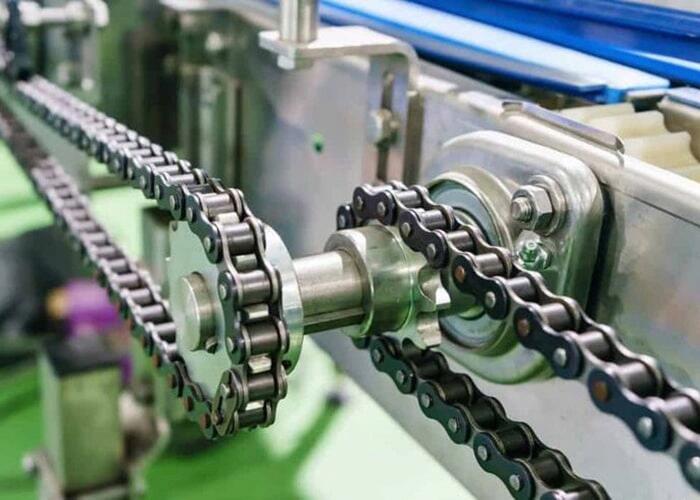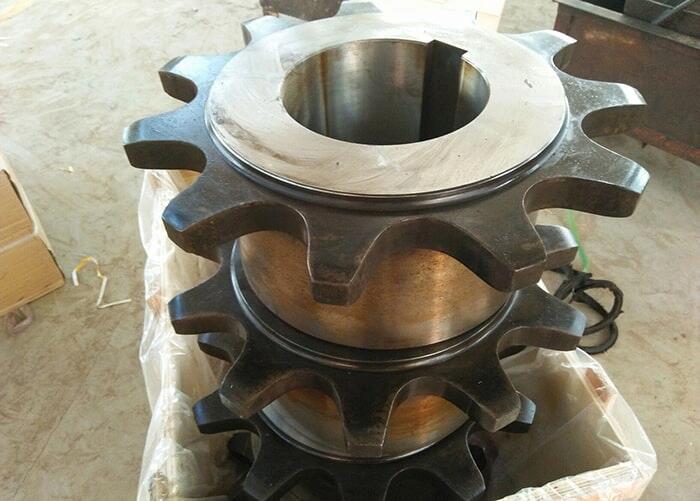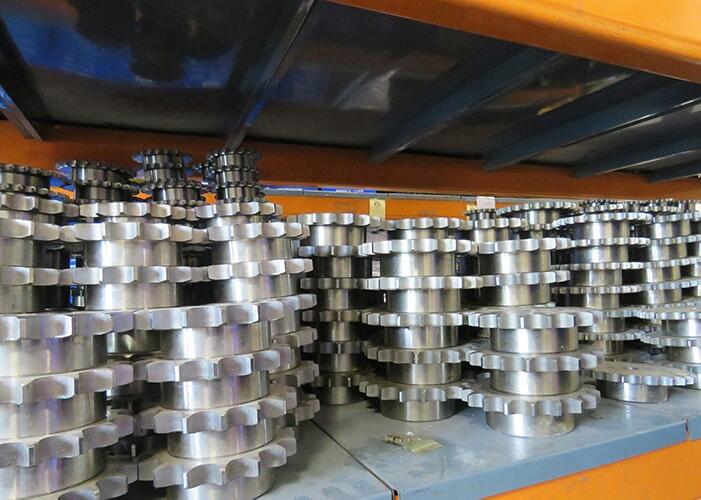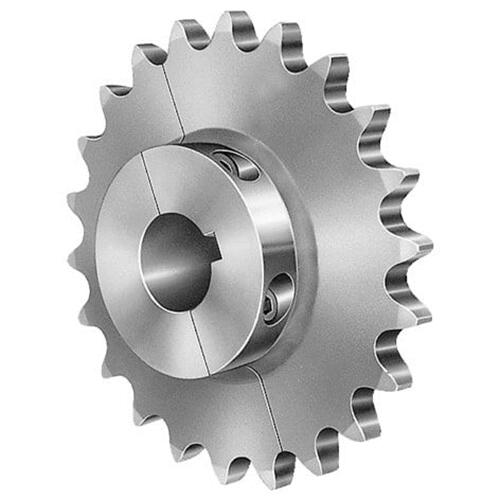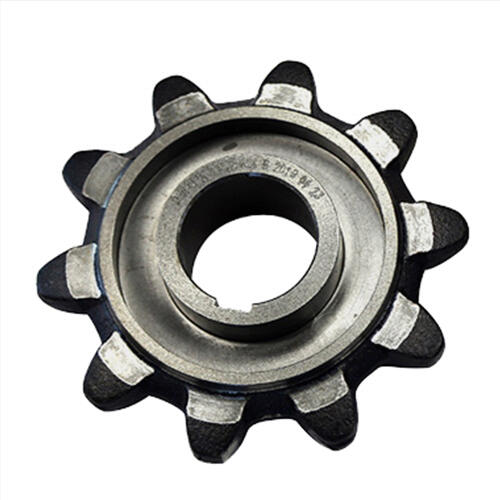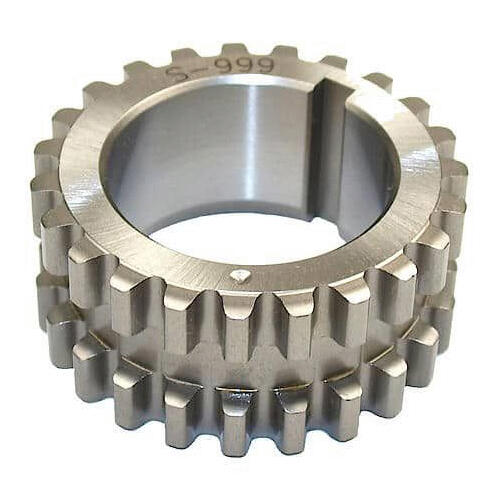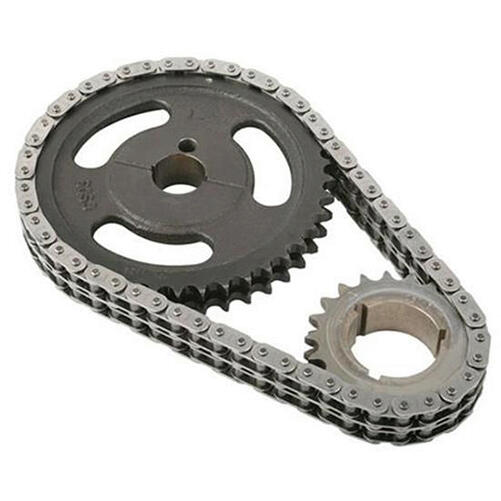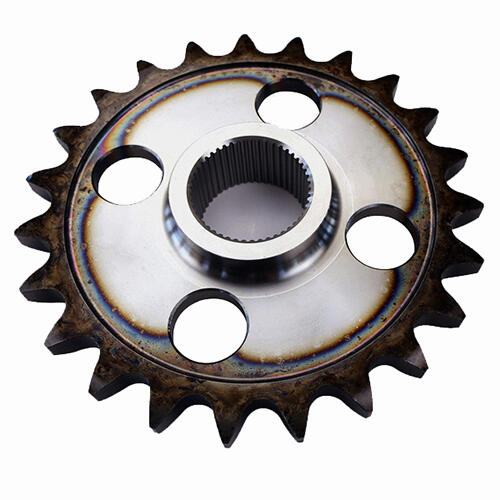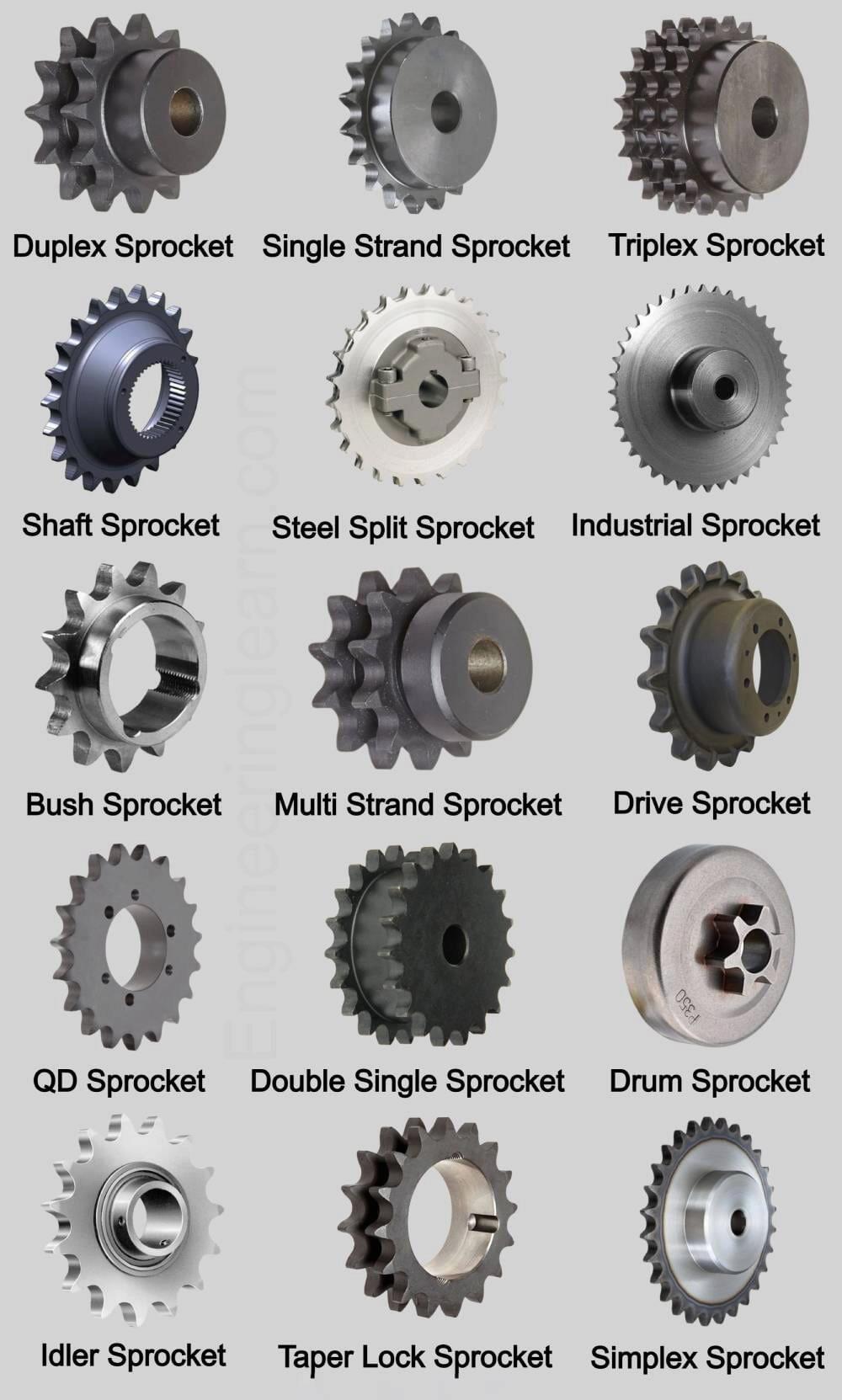Chain Wheel
A smoother, calmer, more efficient, less friction and accurate life
Gears, along with industrial chains, are one of the important components in industrial machinery and equipment that are used to transfer motion and power from one shaft to another. These parts, having toothed surfaces, are made by turning and other processes and are used in various industries to transmit rotary motion, reduce or increase speed, transmit power and other applications.
Choosing industrial gears is very important because of the important role they play in the transmission of movement and power. In choosing the right chain gear, you should pay attention to the following:
- Chain Wheel Type: Industrial gears can be divided into several types. The two main types of gears are spur gears, whose teeth are in a straight line, and bevel gears, whose teeth are conical. Also, toothed gears can be divided into other types such as helical gears, spiral bevel gears and angular gears.
- Chain Wheel Ratio: The gear ratio expresses the number of teeth in different gears and determines the ratio of speed and transmission power between two shafts. By changing the number of teeth in different gears, the power and speed can be changed in some way.
- Teeth and Profile: The teeth of the ribs are precisely cut to reach a specific and precise profile. The profile of the teeth depends on the type of gear and can be straight or indirect.
- Materials: Industrial gears may be produced from various materials such as steel, aluminum, bronze, stainless metals, etc. The choice of materials depends on the functional characteristics and working environment of the gear.
- Manufacturing Methods: Industrial gears are made using turning, heat treatment, precision machining and other processes. The ability to accurately manufacture gears is very important for optimal performance without failure.
Types of Sprockets
Industrial chain wheels are used as one of the important components in mechanisms and industrial machines and can be designed in different types and with different alloys. Below, important types of industrial chain gears:
1. Single Strand Sprockets: In this type of gears, a chain is connected to only one gear, and if there is a need to change the rotation ratio, the selection of the gear size is changed.
2. Double Strand Sprockets: In this type of gears, two chains are connected to one gear and the rotation ratio between the two chains is usually the same.
3. External Tooth Sprockets: In this type of gear, the outer gears are toothed and the chain is connected through the gears.
4. Internal Tooth Sprockets: In this type of gear, the internal gears are toothed and the chain is connected from the inside of the gears.
5. Double-Row Sprockets: These types of gears have two rows of teeth that are connected to two chains and are suitable for heavy loads and more power transmission.
6. Idler Sprockets: These types of gears are used to adjust chain tension and prevent chain slack and are mainly used as auxiliary gears.
1. Single Strand Sprockets: In this type of gears, a chain is connected to only one gear, and if there is a need to change the rotation ratio, the selection of the gear size is changed.
2. Double Strand Sprockets: In this type of gears, two chains are connected to one gear and the rotation ratio between the two chains is usually the same.
3. External Tooth Sprockets: In this type of gear, the outer gears are toothed and the chain is connected through the gears.
4. Internal Tooth Sprockets: In this type of gear, the internal gears are toothed and the chain is connected from the inside of the gears.
5. Double-Row Sprockets: These types of gears have two rows of teeth that are connected to two chains and are suitable for heavy loads and more power transmission.
6. Idler Sprockets: These types of gears are used to adjust chain tension and prevent chain slack and are mainly used as auxiliary gears.
Important points in choosing a Sprockets

Workplace
Chains must be resistant to various environmental conditions such as corrosion, moisture, etc. Therefore, you must consider the conditions of the work environment. For example, if the chain gear is subject to corrosion, you should choose a chain gear that has high corrosion resistance.

Speed
Chain gears must be able to withstand the required speed. Therefore, you should consider the expected speed. For example, if the chain gear is used to transmit the power of a high-speed machine, you must choose a chain gear that can withstand the required speed.

Load
Chain gears must be able to withstand the required load. Therefore, you should consider the amount of expected load. For example, if the chain gear is used to transmit the power of a heavy engine, you should choose a chain gear that can withstand the required load.

Application
Gear chains are produced in different types for different applications. Therefore, before choosing a chain gear, you should determine its application type. For example, the gears of agricultural chains must have high resistance to corrosion and wear. Industrial chain gears must be able to withstand heavy loads. Gears of mineral chains must have high impact resistance. The gears of the transport chains must have high speed.




-min.jpg)
